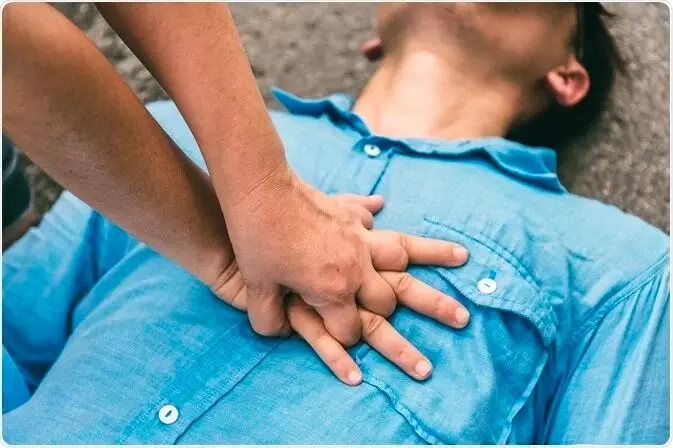Gymkhana stampede aftermath: Why is CPR training necessary? How can it save lives?
According to the Accident Deaths and Suicides in India- 2021 published by the National Crime Records Bureau, 12.8% of persons in India died of sudden deaths in 2021. Nearly 28413 persons died due to cardiac arrest while 22326 persons died a sudden death due to other reasons in 2021.
By Amrutha Kosuru
Ranjitha, a housekeeping staff member, was badly injured in the stampede at Gymkhana Grounds last week.
Dawa Naveena, a police constable on duty, saved Ranjita's life by her presence of mind. She found her unconscious and unresponsive. Without wasting a second she administered CPR.
Despite the continuous effort, Ranjita didn't revive, but Naveena persisted until she became conscious. She was later admitted to a hospital for further treatment. Naveena had been taught administering CPR during her course training in the police department.
Naveen was felicitated at Apollo Hospitals, Jubilee Hills. She was lauded for her presence of mind and persistence in reviving an unconscious and unresponsive woman, through CPR (Cardiopulmonary Resuscitation).
According to the Accident Deaths and Suicides in India- 2021 published by the National Crime Records Bureau, 12.8% of persons in India died of sudden deaths in 2021. Nearly 28413 persons died due to cardiac arrest while 22326 persons died a sudden death due to other reasons in 2021.
NCRB has defined sudden death as an unexpected death that is instantaneous or occurs within minutes of any cause other than violence. (for example heart attack, brain hemorrhage, etc.)
"One of the many ways to avoid sudden deaths is CPR (Cardiopulmonary resuscitation)," said Dr. Hygriv Rao, Senior Cardiologist, KIMS, Hyderabad. "CPR can be done by anyone. No medical qualification is required," he said.
Dr. Hygriv Rao said that sudden deaths happen to both people with and without heart disease.
Dr. Hygriv Rao is also the founding president of the Arrhythmia Research and Training Society (ARTS)- a group of medical persons who have conducted multiple CPR training sessions for traffic police and the public since its formation in 2015.
The first training session was conducted for non-medical staff in KIMS many years ago.
"It takes nearly a day to teach and practice CPR. One medical person/doctor can teach up to 10 people at a time," Dr. Hygriv said.
He recalled an incident in 2016 or 17 when a traffic police officer saved a lady with CPR and brought her into emergency care.
On the occasion of Sudden Cardiac Arrest Awareness Week, 2022 (25 Sept- 03 Oct) ARTS will conduct a CPR workshop with the Income Tax Officials.
"Our main motto is 'Har Ghar Se Ek'. There should be at least one person in every family who can do CPR," he said.
Joint Managing Director, Apollo Hospitals, Dr. Sangita Reddy said, Apollo Hospitals for the first time initiated CPR and lifesaving training in Hyderabad in 1996 as part of emergency care. Several underwent the training, but only a few like Naveena use their learning to save lives. She is a true epitome of inspiration and following her footsteps could save several precious lives."
Dr. Ravindra Babu, Director of Medical Services, Apollo Hospitals, said: "The pre-hospitalization care in case of an emergency determines the outcome and patient's ability to recover. In such circumstances, the golden period is limited to five minutes. If we can perform Basic Life Support (BLS), the patient's recovery and brain recovery chances improve. Immediate response by laymen trained in BLS at the accident site can enhance a patient's chances of recovery and survival. Because Naveena was trained in Basic Life Support, she could perform it and save the patient. It's not about taking the patient to the hospital, but performing BLS before that is critical for patient survival."